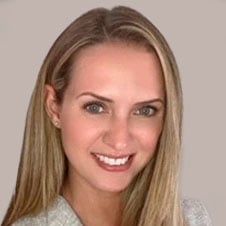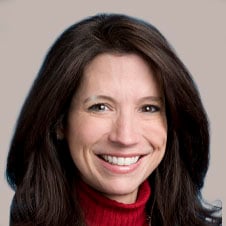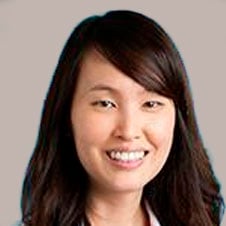The Southeast Permanente Medical Group (TSPMG) in Atlanta has seen a notable improvement in well-being since the start of burnout measurement in 2021, with the burnout rate dropping from 48% in 2022 to an encouraging 43% in 2023—significantly lower than the nationwide burnout rate of 53% reported by the AMA Organizational Biopsy® The achievement underscores TSPMG's commitment to addressing and alleviating the challenges associated with burnout within its clinicians and staff.
A systematic approach employed by TSPMG not only resulted in tangible positive outcomes but has also garnered bronze-level recognition from the AMA Joy in Medicine™ Health System Recognition Program.
The program is designed to guide organizations interested or already engaged in improving physician satisfaction and reducing burnout. In 2023, 72 health systems were honored for their dedication to physician well-being.
But TSPMG—a member of the AMA Health System Program that provides enterprise solutions to equip leadership, physicians and care teams with resources to help drive the future of medicine—is not new to work on addressing physician burnout.
While the medical group had a well-being committee in place for years, a recent change put IT up front in discussions about burnout.
Filling in the gap with IT
Bringing IT to the table really began with TSPMG’s previous work to improve operational inefficiencies with its “Pebbles in the Shoe” campaign. This effort set out to identify and reduce inefficiencies and documentation burdens by offering a three-week challenge period for clinicians and staff to submit ideas - “pebbles” - for improving efficiencies. From there, teams work behind-the-scenes to address these issues throughout the year.
In the first year of the program, 163 pebbles were submitted, “which we loved from an engagement perspective, but hated from an inefficiency perspective,” said Kerri-Lyn Kelly, senior business consultant of people and culture.
That first year, one “pebble” focused on changing the email and meeting culture. After creating a work culture workgroup, the team implemented Work Wise, which provided education, resources and unified norms around improved email, meeting culture, and efficiency.
Another pebble suggested offering a waiting list for patients to fill appointment slots created when members cancel an appointment within 24 hours. To solve this, the team launched Fast Pass, an automated waitlist that fills open spots with patients who want earlier appointments. It has improved both patient and staff satisfaction.
“Having a campaign like Pebbles in your Shoe helps you to recognize problems and identify potential solutions quickly,” Kelly said.
“Many of the pebbles we received were related to IT—things like our EHR,” said Reneathia P. Baker, MD, a TSPMG pediatrician and associate medical director for People and Culture. “That’s when we had an ‘Aha!’ moment that we needed someone on our wellness committee who understood the complexities and could help solve those problems.
“We really needed someone to provide insight and intel into the background of how those things work,” Dr. Baker added. “We were very fortunate to add a member to the committee who has experience in that field. She is helping us understand it and work through the various steps.”
Additionally, “we have a committee member who works on what we call our Accelerated Care Transformation team who has access to IT resources, databases and metrics,” said Kelly. “They were able to help us with our AMA application and access resources we need to drive projects forward.”
Reducing physician burnout is a critical component of the AMA Recovery Plan for America’s Physicians.
Far too many American physicians experience burnout. That's why the AMA develops resources that prioritize well-being and highlight workflow changes so physicians can focus on what matters—patient care.
How AI could help
“One of the things we’re working on is using AI technology to streamline charting for our front-line clinicians,” Dr. Baker said. “The technology uses ambient listening to create notes as the clinician speaks to the patient, which should reduce charting time.”
That is where members of the wellness committee are “helping identify what data we need, establishing current baselines for charting time, understanding how much time clinicians are spending working outside of work hours, things of that nature,” she said. “Then we will help assess how this new technology affects those areas through surveys and other methods.”
Maintaining open communication
For the past two years, Dr. Baker has met with a group of TSPMG physicians who are part of the medical group’s mentoring program—which pairs new employees with mentors who have tenure within the organization—as a year-end wrap up. This special session invites participants to a breakfast with the executive medical director to ask questions. Afterward, Dr. Baker spends time with participants to discuss organizational burnout.
“I use them as a focus group of what our medical group is feeling and experiencing, using the AMA’s framework to walk people through where we are with burnout,” Dr. Baker said. “We talk about our current rate, the work we’re doing in each of those categories, and the opportunities. It’s been a very fruitful conversation.”
“We know we struggle most around operational efficiency, so figuring out how to improve things like in-basket support in our electronic medical record is key,” she said. “We talk about how to help make processes smoother, make them align.”
“It helps clinicians see how it is all interconnected. They see that we really are making progress in so many areas,” Dr. Baker said.
Receiving recognition for well-being
Given all this work, it is no surprise that the medical group’s work received recognition from the AMA.
“Our Southern California colleagues had been recognized for their work, and that was inspiring for us. We weren’t sure how we measured up, and, frankly, didn’t have the resources to study it,” said Angela Ippolito, TSPMG’s vice president of human resources and chief people officer.
But Ah Rim Shin, MD, a TSPMG family doctor who joined the Wellness committee as physician lead in 2022, “rolled up her sleeves and began to study each area of the program.”
“She was really curious, and as she dug in, she began to believe that we could do this,” Ippolito said. Noting that once Dr. Shin was “in place and we had a bigger and better infrastructure around wellness, we thought: Now’s the time. Let’s try it.”
“It was important to us that the recognition match the work. We want people to see the improvements so that the certification makes sense, that it matters, that people feel valued,” said Dr. Baker. “There is work underway in 2024 that we are very excited about, and we plan to reapply in 2025 for gold.”
Reaching out to the AMA for help
According to Dr. Shin, the road map for the AMA Joy in Medicine Health System Recognition Program “was very helpful, but there were some instances where we weren’t quite sure if something that we were doing aligned with the criteria.” That is why she “took advantage of the AMA’s drop-in sessions and heard from other organizations.”
“The assistance from the AMA in the application process was crucial,” Dr. Shin said. “The sessions answered questions that I didn’t even know I had, and will help us prepare for future applications. The AMA team was so responsive and supportive.”
“The AMA framework has helped us talk about burnout within our organization, and clearly explain how we are approaching it,” Dr. Baker said.
She notes that she follows the six criteria from the Joy in Medicine program “all the time to explain why we have to do certain things first. We have to make sure we’re assessing it, then get buy-in from senior leaders to support the work,” she added. The process “benefits the entire organization and helps us better meet the needs of our patients.”







